Systematics of spiny predatory katydids (Tettigoniidae: Listroscelidinae) from the Brazilian Atlantic Forest based on morphology and molecular data
- PMID: 25118712
- PMCID: PMC4131907
- DOI: 10.1371/journal.pone.0103758
Systematics of spiny predatory katydids (Tettigoniidae: Listroscelidinae) from the Brazilian Atlantic Forest based on morphology and molecular data
Abstract
Listroscelidinae (Orthoptera: Tettigoniidae) are insectivorous Pantropical katydids whose taxonomy presents a long history of controversy, with several genera incertae sedis. This work focused on species occurring in the Brazilian Atlantic Forest, one of the world's most threatened biomes. We examined material deposited in scientific collections and visited 15 conservation units from Rio de Janeiro to southern Bahia between November 2011 and January 2012, catching 104 specimens from 10 conservation units. Based on morphological and molecular data we redefined Listroscelidini, adding a new tribe, new genus and eight new species to the subfamily. Using morphological analysis, we redescribed and added new geographic records for six species, synonymized two species and built a provisional identification key for the Atlantic Forest Listroscelidinae. Molecular results suggest two new species and a new genus to be described, possibly by the fission of the genus Hamayulus. We also proposed a 500 bp region in the final portion of the COI to be used as a molecular barcode. Our data suggest that the Atlantic Forest Listroscelidinae are seriously endangered, because they occur in highly preserved forest remnants, show high rates of endemism and have a narrow geographic distribution. Based on our results, we suggest future collection efforts must take into account the molecular barcode data to accelerate species recognition.
Conflict of interest statement
Figures
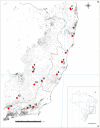
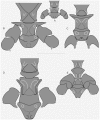
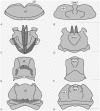
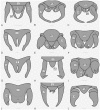
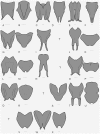

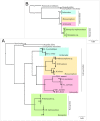

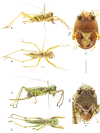

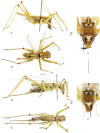

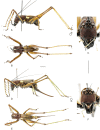


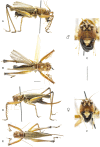


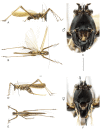


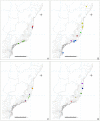
References
-
- Bruner L (1915) Notes on tropical American Tettigonoidea (Locustodea). Ann Carnegie Mus 9: 284–404.
-
- Redtenbacher J (1891) Monographie der Conocephaliden. Verh Zool Bot Ges Wien 41: 315–562.
-
- Saussure deH, Pictet A (1898) Insecta Orthoptera (Orthoptera Genuina). Fam. Locustidae. In: Goodman FD, Salvin O, editors. Biologia Centrali-Americana. v. 1. pp. 345–456.
-
- Karny H (1911) Descriptions Conocephalidarum novarum. Verh Zool Bot Ges Wien 61: 334–347.
-
- Kirby WF (1906) A Synonymic Catalogue of Orthoptera (Orthoptera Saltatoria, Locustidae vel Acridiidae), Vol. 2. London: British Museum (Natural History). 562 p.
Publication types
MeSH terms
Substances
Associated data
- Actions
- Actions
- Actions
- Actions
- Actions
- Actions
- Actions
- Actions
- Actions
- Actions
- Actions
- Actions
- Actions
- Actions
- Actions
- Actions
- Actions
- Actions
- Actions
- Actions
- Actions
- Actions
- Actions
- Actions
- Actions
- Actions
- Actions
- Actions
- Actions
- Actions
- Actions
- Actions
- Actions
- Actions
- Actions
- Actions
- Actions
- Actions
- Actions
- Actions
- Actions
- Actions
- Actions
- Actions
- Actions
- Actions
- Actions
- Actions
- Actions
- Actions
- Actions
- Actions
- Actions
- Actions
- Actions
- Actions
- Actions
- Actions
- Actions
- Actions
- Actions
- Actions
- Actions
- Actions
- Actions
- Actions
- Actions
- Actions
- Actions
- Actions
- Actions
- Actions
- Actions
- Actions
- Actions
- Actions
- Actions
- Actions
- Actions
- Actions
- Actions
- Actions
- Actions
- Actions
- Actions
- Actions
- Actions
- Actions
- Actions
- Actions
- Actions
- Actions
- Actions
- Actions
- Actions
- Actions
LinkOut - more resources
Full Text Sources
Other Literature Sources
Molecular Biology Databases

